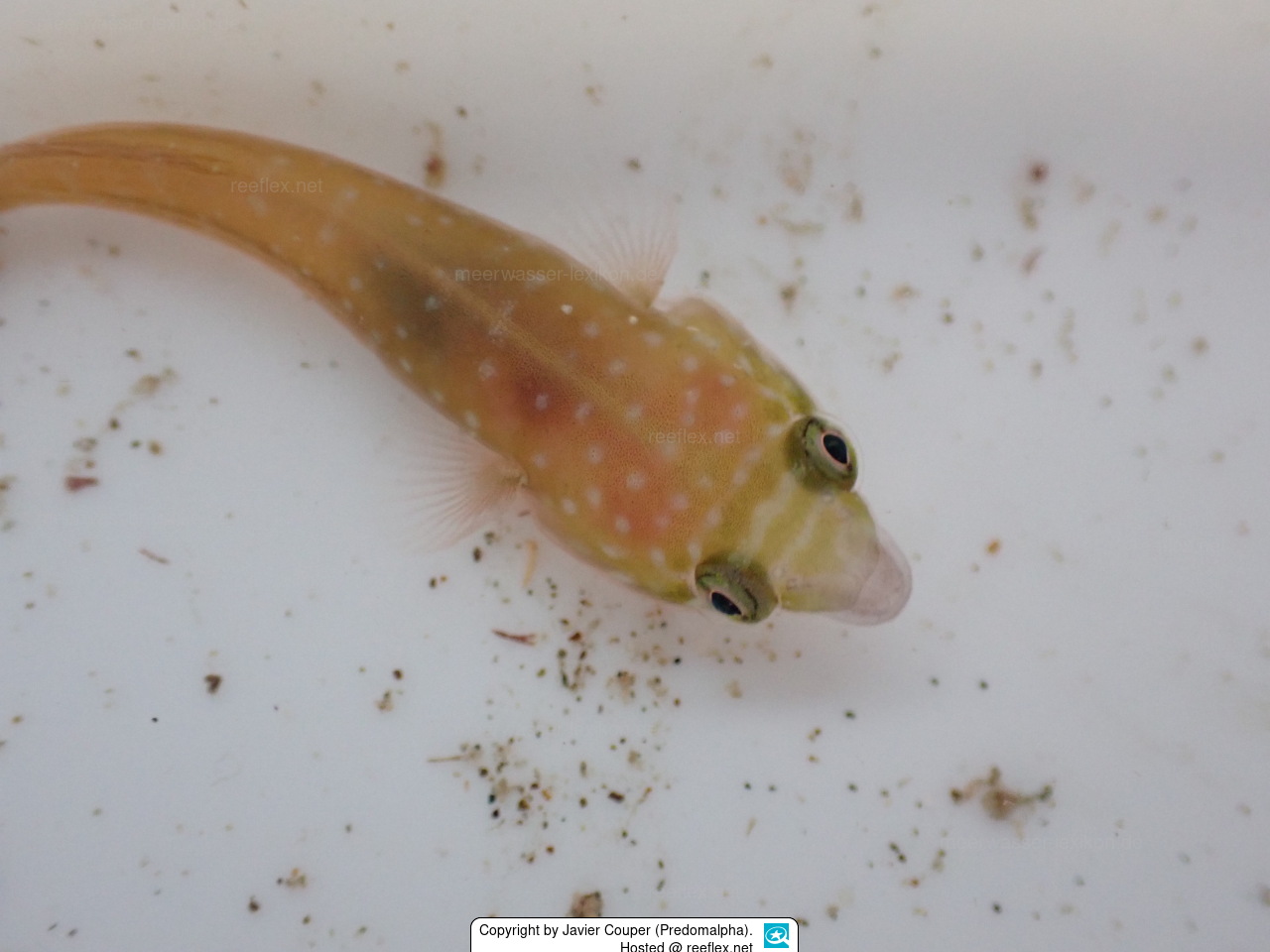Info
Dellichthys trnskii is a sea urchin-associated shieldbelly and was found primarily under rocks or boulders covered with filamentous algae or low macroalgae, often in close proximity to the sea urchin Evechinus chloroticus.
The basic body color is pale orange to yellow with darker markings along the dorsal midline and ventral midline behind the adhesive disc.
Snout and lips are also orange.
An orange to light brown stripe runs along the lateral side of the head behind the orbit.
Dorsal and anal fins are orange along the base, fading to white at the distal margins.
Base and middle of caudal fin pale orange, changing to white at distal margins; pectoral fin hyaline.
Distal margin of pelvic fin whitish, papillae on adhesive disc pale orange, flanking a central pale brown to pale green area (corresponding to orange to pale brown stripe on lateral side of head behind orbit.
In some individuals (possibly females), the white to pale blue lines on dorsal and lateral surfaces of the head are replaced by rows of small white to pale blue spots. Tip of snout and adjacent parts of lips pink. Iris orange. Fins clear to translucent orange/yellow.
The species Dellichthys morelandi is known to feed parasitically on the feet of the sea urchin.
To obtain identical evidence for Dellichthys trnski, a CT of the paratype was performed, but this only revealed small dense objects, possibly sand grains in the pharyngeal cavity and gut.
A single ctenoid scale is also located in the pharyngeal cavity of this individual, whether this scale was swallowed or entered the mouth after capture is difficult to confirm.
The specimen was collected along with a large number of associated subtidal species, including some threefin blennies, some of which may have shed scales in the pouch.
Etymology:
The species was named after Tom Trnski, who played a key role in the discovery of the new species by collecting at depths inaccessible to the first author.
Jumping guard
A jumping guard prevents (nocturnal) fish from jumping out.
Wrasses, blennies, hawkfishs and gobies jump out of an unprotected tank in fright if their night rest is disturbed, unfortunately these jumpers are found dried up in the morning on carpets, glass edges or later behind the tank.
https://www.korallenriff.de/en/article/1925_5_Jump_Protection_Solutions_for_Fish_in_the_Aquarium__5_Net_Covers.html
A small night light also helps, as it provides the fish with a means of orientation in the dark!
The basic body color is pale orange to yellow with darker markings along the dorsal midline and ventral midline behind the adhesive disc.
Snout and lips are also orange.
An orange to light brown stripe runs along the lateral side of the head behind the orbit.
Dorsal and anal fins are orange along the base, fading to white at the distal margins.
Base and middle of caudal fin pale orange, changing to white at distal margins; pectoral fin hyaline.
Distal margin of pelvic fin whitish, papillae on adhesive disc pale orange, flanking a central pale brown to pale green area (corresponding to orange to pale brown stripe on lateral side of head behind orbit.
In some individuals (possibly females), the white to pale blue lines on dorsal and lateral surfaces of the head are replaced by rows of small white to pale blue spots. Tip of snout and adjacent parts of lips pink. Iris orange. Fins clear to translucent orange/yellow.
The species Dellichthys morelandi is known to feed parasitically on the feet of the sea urchin.
To obtain identical evidence for Dellichthys trnski, a CT of the paratype was performed, but this only revealed small dense objects, possibly sand grains in the pharyngeal cavity and gut.
A single ctenoid scale is also located in the pharyngeal cavity of this individual, whether this scale was swallowed or entered the mouth after capture is difficult to confirm.
The specimen was collected along with a large number of associated subtidal species, including some threefin blennies, some of which may have shed scales in the pouch.
Etymology:
The species was named after Tom Trnski, who played a key role in the discovery of the new species by collecting at depths inaccessible to the first author.
Jumping guard
A jumping guard prevents (nocturnal) fish from jumping out.
Wrasses, blennies, hawkfishs and gobies jump out of an unprotected tank in fright if their night rest is disturbed, unfortunately these jumpers are found dried up in the morning on carpets, glass edges or later behind the tank.
https://www.korallenriff.de/en/article/1925_5_Jump_Protection_Solutions_for_Fish_in_the_Aquarium__5_Net_Covers.html
A small night light also helps, as it provides the fish with a means of orientation in the dark!







 Javier Couper (Predomalpha), New Zealand
Javier Couper (Predomalpha), New Zealand





